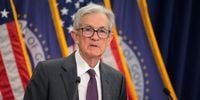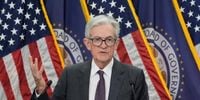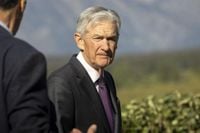Federal Reserve Chair Jerome Powell delivered what may be his most consequential speech yet at the annual Jackson Hole symposium on August 22, 2025, signaling a potential shift in the central bank’s approach to interest rates. With the economy at a crossroads—caught between persistent inflation and a softening labor market—Powell’s remarks have set the tone for monetary policy decisions that could ripple through American households, global markets, and the political landscape for months to come.
Addressing policymakers, economists, and journalists in Wyoming, Powell acknowledged the central bank is leaning toward lowering its policy rate in the near term, a move that could arrive as soon as the highly anticipated September meeting. "Our policy rate is now 100 basis points closer to neutral than it was a year ago, and the stability of the unemployment rate and other labor market measures allows us to proceed carefully as we consider changes to our policy stance," Powell said, according to PIMCO and other outlets covering the event. "Nonetheless, with policy in restrictive territory, the baseline outlook and the shifting balance of risks may warrant adjusting our policy stance."
The central bank’s dual mandate—keeping inflation in check while maintaining a stable labor market—has rarely been more challenging. Inflation remains stubbornly above the Fed’s 2% target, holding at 2.7% in July, up from 2.4% in May, as reported by CME Fed Watch and Homes.com. At the same time, the job market is showing signs of strain. The U.S. economy added just 73,000 jobs in July, falling well short of the expected 106,000. Previous months’ job numbers were revised downward, and unemployment, while still low by historical standards, has begun to creep up. Job vacancies are limited, with companies hesitant to hire and workers reluctant to switch jobs.
Powell described the current labor market as “a curious kind of balance that results from a marked slowing in both the supply of and demand for workers,” according to Homes.com. He went on to warn, “Downside risks to employment are rising,” making it clear that the central bank is increasingly concerned about a potential uptick in layoffs and unemployment. "While the labor market appears to be in balance, it is a curious kind of balance that results from a marked slowing in both the supply of and demand for workers," he reiterated.
The Fed’s July decision to keep rates steady was not without controversy. According to meeting minutes, two governors—Michelle Bowman and Christopher Waller—dissented. Bowman noted, “inflation [is] moving considerably closer to the Committee's objective, after excluding temporary effects of tariffs, a labor market near full employment but with signs of less dynamism, and slowing economic growth this year.” These internal divisions highlight the complexity of the Fed’s current predicament.
Powell’s keynote also addressed the impact of President Donald Trump’s tariff agenda, which has introduced new uncertainty into the economic outlook. "The economy has faced new challenges. Significantly higher tariffs across our trading partners are remaking the global trading system. Tighter immigration policy has led to an abrupt slowdown in labor force growth," Powell said, as reported by BBC and Homes.com. He added, “There is significant uncertainty about where all of these policies will eventually settle and what their lasting effects on the economy will be.”
Despite the political pressure—much of it coming directly from the White House—Powell was adamant that the Fed’s decisions are guided by data, not politics. Trump has publicly called for Powell’s removal, dubbing him “Too Late” and pushing for aggressive rate cuts. The president has also called for the resignation of Fed Governor Lisa Cook amid mortgage fraud accusations and is actively reshaping the Fed’s board, having nominated Stephen Miran to fill a vacancy after Adriana Kugler’s resignation. Powell responded firmly: “Members will make these decisions, based solely on their assessment of the data and its implications for the economic outlook and the balance of risks. We will never deviate from that approach.”
Political maneuvering aside, the effects of the Fed’s potential rate cut would be felt far beyond Washington. For American borrowers, a lower policy rate could mean reduced costs for mortgages, auto loans, and credit cards. However, as Homes.com and Freddie Mac point out, a Fed rate cut does not guarantee a drop in mortgage rates, which are set by lenders and often track the 10-year Treasury bond. As of August 21, the 30-year fixed-rate mortgage averaged 6.58%—the lowest point this year after four consecutive weeks of decline.
The housing market, in particular, stands to benefit from a shift in Fed policy. After years of tight inventory, July saw the number of houses on the market surpass pre-pandemic levels, with a 26% increase (nearly 300,000 more homes) compared to the previous year. “The interest rate cuts by the Fed are expected to translate into lower mortgage rates and improved housing affordability. That, in turn, should lead to higher buyer demand,” said Erika Ludvigsen, Homes.com’s national director of residential analytics. Still, the relationship between Fed policy and housing affordability is far from straightforward. The last rate cut in December 2024 did not immediately lower mortgage rates, and elevated rates, combined with increased listings, could keep home prices in check even as overall appreciation remains positive.
Meanwhile, inflation remains a stubborn adversary. Consumers continue to pay more for goods and services, and Powell acknowledged, “The effects of tariffs on consumer prices are now clearly visible. We expect those effects to accumulate over the coming months, with high uncertainty about timing and amounts.” He cautioned that, “It is also possible, however, that the upward pressure on prices from tariffs could spur a more lasting inflation dynamic.”
For many, Powell’s speech at Jackson Hole was notable not just for its policy implications but also for its timing. This was his last appearance at the symposium as Fed chair, with his term set to end in May 2026. Uncertainty lingers about whether he will remain on the Fed’s board after his term as chair concludes, as he holds a separate term as governor through 2028.
As the Fed weighs its next move, the stakes could hardly be higher. The central bank’s revised monetary policy framework, described as “sensible and well-telegraphed” by market observers, underscores its enduring commitment to its mandate—even as the ground shifts beneath its feet. Powell summed up the challenge succinctly: “Monetary policy is not on a preset course.” With economic signals flashing mixed messages and political crosswinds intensifying, the coming months promise to test the Fed’s resolve and independence as never before.
In a year of uncertainty, all eyes remain fixed on the Fed’s next move—one that could determine the trajectory of the U.S. economy well into 2026 and beyond.






